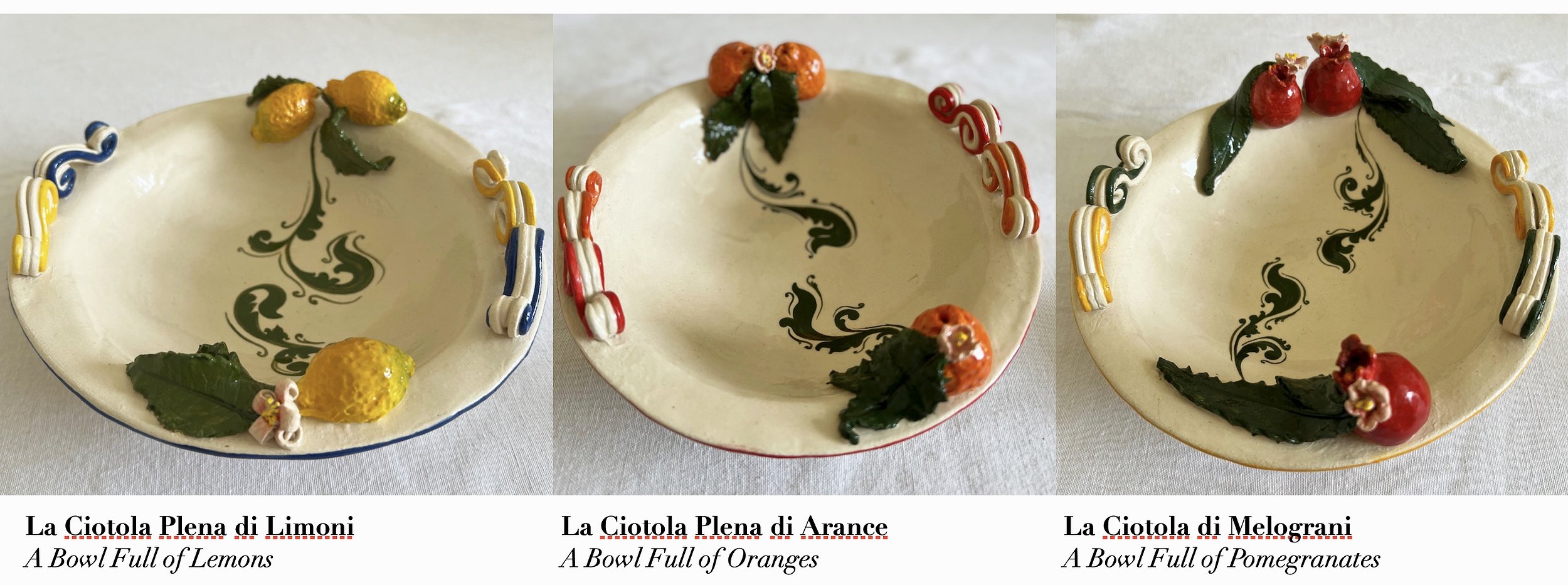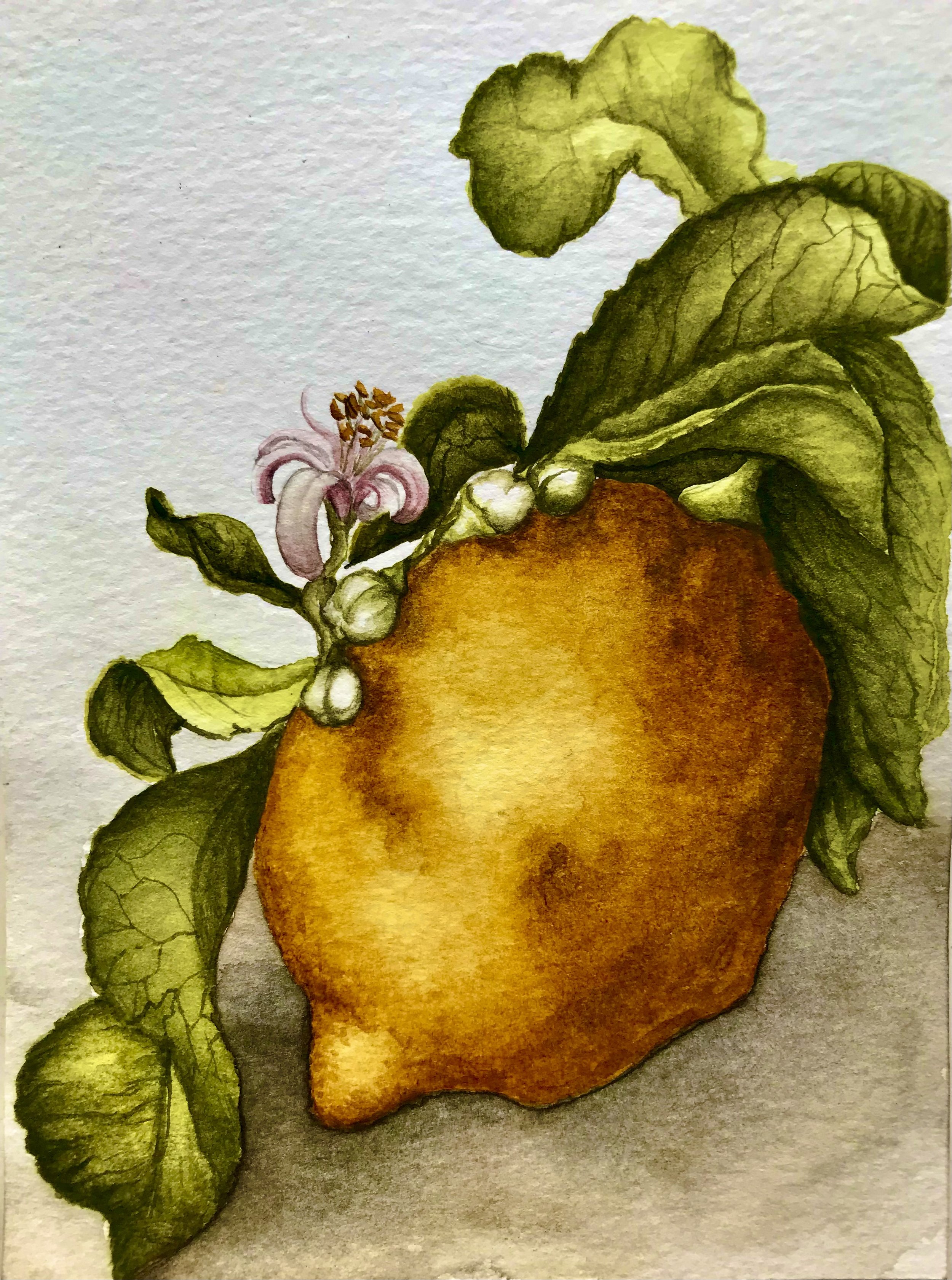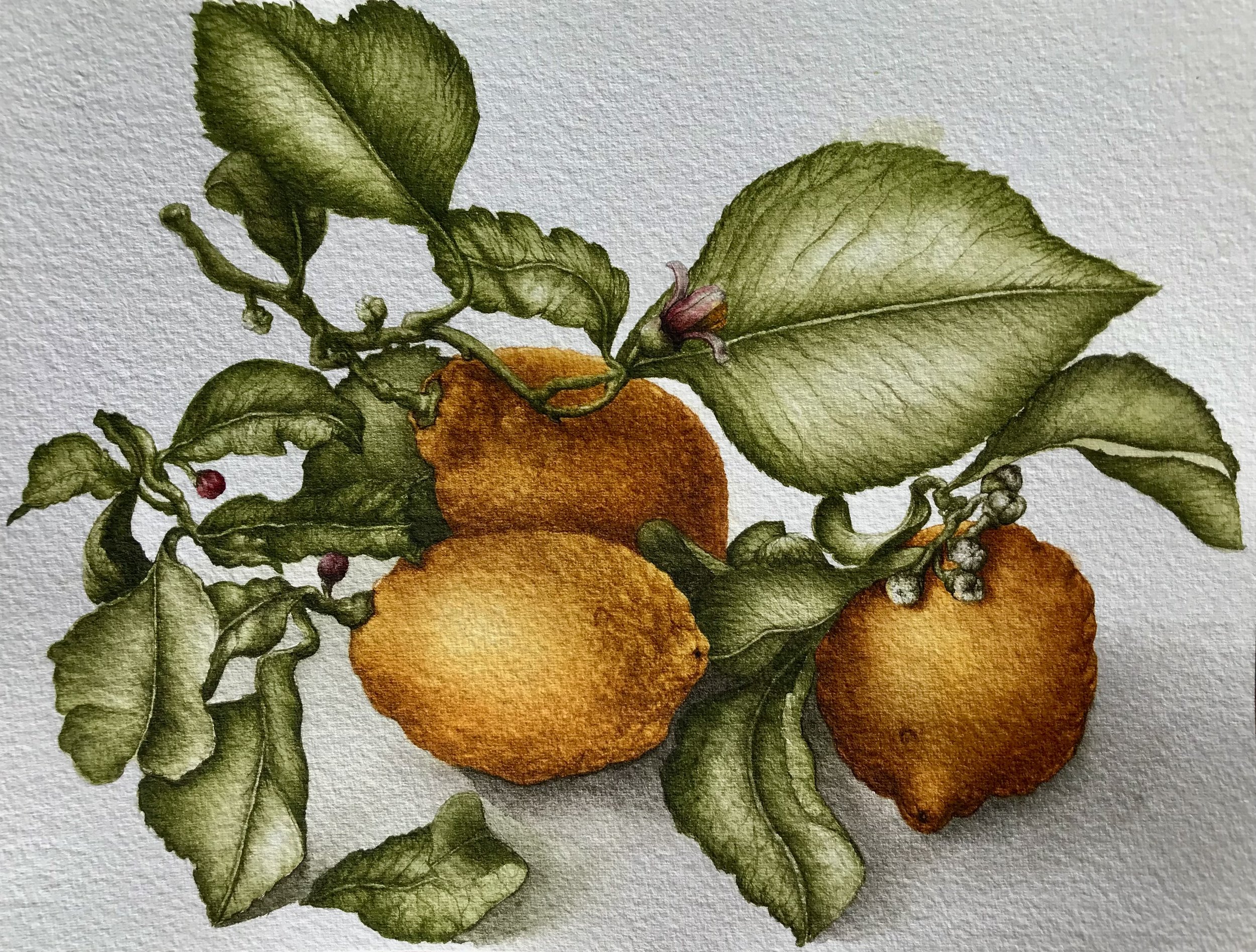The Inspiration
Sicily is a land of many legends, but the one that provided the guiding thread for this adventure was the myth of Proserpina (Greek: Persephone), the classical goddess of Spring, who was abducted by Pluto (Greek: Hades), the god of the Underworld. As a stepping stone across the Mediterranean, Sicily is the custodian of an abundance of visual anthropology, enriched by centuries of diverse commerce and conquest. In seeking out Sicily’s classical past, inspiration came not only from ancient sources but also from the modern culture that has sprung from it. The vibrancy of the ancient world, from the polychrome pop-colours on vases, votives and even the very temples themselves, has not faded from modern day Sicily and is reflected in the artwork for this exhibition.
The show highlights some of the island’s epic legends, past and present, presented through a variety of media and showcases a reinterpretation of some of Sicily’s iconic forms of storytelling, such as the distinctive painting style (Carretto Siciliano) of the donkey carts and the theatrical staging of its puppet shows (Opera dei Pupi).

I MIEI PALADINI / PUPI IN CERAMICA
Ceramic Marionettes
Above: miniature marionettes (approximately 18cm tall).
Below: large marionettes (approximately 44cm tall).
The puppet theatres of Sicily (Opera dei Pupi) emerged in the 19th century, but their origin may be traced back to the Greek marionettists around during the time of Socrates and Xenophon in the 5th century BCE from the evidence of rod marionettes in ancient Syracuse. Traditionally, the pupi are crafted from wood, decorated with realistic metal armour and take to the stage to reenact episodes from medieval chivalric literature and epic Italian Renaissance poems, like The Song of Roland or Orlando furioso, as well as stories from the classical world of ancient Greece and Rome.
For the poor Sicilian audience, these legends represented more than an escapist world; the pupi personified the hopes, struggles, victories and defeats in their own lives. They became an atemporal picture of daily life, of friends and enemies, of loyalty and treachery, of ingratitude and injustice of those in power.
Also captivated by the lively performance in Palermo from one of Sicily’s oldest family run companies and, in honour of this tradition, I created my own articulated pupi in ceramic. Collectivly they can stage Proserpina’s story; to accompany Persephone, as was the tradition for unmarried maidens in classical times, are her handmaidens ( the καρπος-φορος, or ‘fruit-bearers’). These attendants personify the fecundity of Sicily and Proserpina’s mother, Ceres, as the goddess of fertility and the harvest. They also anticipate Proserpina’s future role as the goddess who brings the spring and with it the new fruits.

LE CIOTOLE DI FRUTTA
Fruit Bowls, made from Cornish stoneware clay, clear glazed and decorated by hand.

Vaso Nuziale (λεβες γαμικος)
A Nuptial Vase for Proserpina

9cm tall with a 9cm aperture.
The vase was inspired by a series of early 2nd century BCE vessels painted with the same striking pink tones as the votive statues of Proserpina. One such nuptial vase, that would have been used in a marriage ceremony, was decorated with a scene in homage to a bride and with floral motifs in relief. This Centuripe ware style is here used to create a vase celebrating the marriage of Proserpina and Pluto, embellished with the goddess’s springtime florals and vibrant colours.
CASSETTE
Decorated wooden caskets. 7.6cm x 5cm wide, 7.6cm high.





CARRETTO SICILIANO

The antique stool is painted by hand in the manner of Carretto Siciliano: a highly ornate and colourful style of decorating donkey drawn carts indigenous to the island of Sicily. Each province has its own unique style and they are often brought out for wedding ceremonies. The spoked wheel carts, originally introduced to the island by the ancient Greeks, are covered in carvings and brightly painted scenes from Sicilian history and folklore. The designs incorporate elements from Classical mythology, Christianity, tales of war and love or scenes from rustic life, Medieval Italian legends and local mysticism. Sicilian art and culture is a unique blend that has evolved out of the numerous civilisations, from the Phoenicians, the Greeks, the Romans, to the Turks, the Bourbons, the Arabs, the Normans and the Spanish. The battles of king Charlemagne and his Paladin Knights remain the most popular theme on the carts and for performances at the Opera dei Pupi.
The stool follows the painting style found in south-east Sicily, where the colour scheme is dominated by a crimson red background with the addition of yellow ochre (the colours of Sicily’s flag), cerulean blue and emerald green foliate patterns. The body is historiated with Baroque inspired motifs, such as the phoenix which is a symbol of resurrection and transformation. In the 16th century Italian epic poem Orlando Furioso by Ludovico Ariosto, which recants the legends of Charlemagne and his knights, the mightiest female knight, named Marfisa, also bore the phoenix as her emblem.
The manula (almond shape) on the top is filled with Sicilian lemons, oranges and the pomegranate, which reoccur in vignettes on the legs to celebrate the richness of this volcanic land nurtured by Mount Etna.

I LIMONI
Watercolour Portraits of Italian Lemons

AURUM SICILIAE
‘Sicilian Gold’
(16.5cm x 11.4cm)
The real treasure of Sicily. The citron, followed later by lemons, were rare and exotic goods that became a status symbol of one’s wealth. French crusader knights were known to woo a lady by gifting her a lemon pierced with cloves, as both were seen as highly expensive goods at the time.
The poem behind the portrait
‘Here eternal flowers sigh with a sweeter Zephyr, which your blossom-bearing Henna never grew, and therewithal is a bountiful tree in a dappled grove, its bowing boughs resplendent with living ore: this is consecrated to you. For you shall be queen of the blessed autumn and shall ever be enriched with golden fruits.’
From De Raptu Proserpinae by Claudian Claudianus:
Zephyris illic melioribus halant
perpetui flores, quos nec tua protulit Henna,
est etiam lucis arbor praedives opacis
fulgentes viridi ramos curvata metallo :
haec tibi sacra datur fortunatumque tenebis
autumnum et fulvis semper ditabere pomis.

CORONA FRONDOSA ‘A Crown of Leafy Locks’
(7.6cm x 7.6cm)
The poem behind the portrait:
‘Infuse my veins and with a mighty breath revive my land. May I be worthy to be plundered by divine fingers and goddesses seek to be decked with my garlands.’
From De Raptu Proserpinae by Claudian Claudianus:
in venas disperge meas et flamine largo
rura fove. merear divino pollice carpi
et nostris cupiant ornari numina sertis.

LOCUS APRICUS ‘Sunny Spot’
(15.2cm x 15.2cm)
The poem behind the portrait:
‘The form of the land surpasses its floral beauties: its plains, curvaceous with gradual hillocks and gentle slopes rise into ridges. Springs, issuing from the living stone, lap over its bedewed meadows and leafy groves temper the fierce sun with a cool relief and lays claim to a winter spell in the midst of summer’s scorching heat. ‘
From De Raptu Proserpinae by Claudian Claudianus:
Forma loci superat flores: curvata tumore
parvo planities et mollibus edita clivis
creverat in collem. vivo de pumice fontes
roscida mobilibus lambebant gramina rivis
silvaque torrentes ramorum frigore soles
temperat et medio brumam sibi vindicat aestu.

MEA CITREA FAMILIAE ‘My Familial-Lemon-Tree’
(15.2cm x 15.2cm)
The poem behind the portrait:
‘Like the generations of leaves, as is that of mortal men. Though the wind scatters the old leaves upon the earth, yet the living timber burgeons with fresh buds when the spring returns. So too as one generation of men grows, another fades away.’
From Homer’s Iliad, Book 6.

MEUS NODOSUS PROGENITOR ‘Me and My Gnarly Ancestor’
(10.2cm x 20.3cm)
The forefather of the lemon, known as a citron (Citrus Medica), is the original citrus fruit from which all others have developed. The earliest ‘lemon remains’ were discovered in the Roman Forum and date between the late first century BCE to the early first century CE.

DIADEMA FOLIATA ‘A Dazzling Diadem of Leaves’
(7.6cm x 7.6cm)
The poem behind the portrait:
‘Raise, O Citron, thy laurel laden locks and restyle the hoary eld of thy hallowed head into tresses fresh and fair. Let thy golden diadem flash bright upon thy turret-crowned vertex, and thy golden boss spew forth eternal flames!
Adapted from De Reditu Suo by Rutilius Namatianus:
erige crinales lauros seniumque sacrati
verticis in virides, Citre, refinge comas.
aurea turrigero radient diademata cono,
perpetuosque ignes aureus umbo vomat!

TRINITAS GRATIARUM AUREARUM ‘A Trinity of Golden Graces’
(15.2cm x 15.2cm)
The poem behind the portrait:
‘and the Graces, who fashion all gentle things for mortal men, endow honour and often contrive to make believable the unbelievable.’
From Pindar’s Olympian Ode 1.
